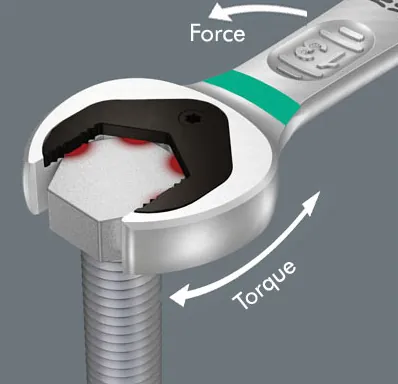How to judge whether the hydraulic wrench is tightened in place
Hydraulic spanner tightening in place to determine the method of detail
Hydraulic spanners are a kind of efficient and precise torque tool, and their working principle is to convert oil pressure into torque through the Hydraulic System. To determine whether the bolt is tightened in place, the key is to understand the working principle of the hydraulic spanner and the concept of torque.
The concept of torque
Torque is the moment of force that causes an object to rotate. In Bolt Tightening, the amount of torque directly affects the strength and reliability of the connection.
Too little torque will cause the connection to loosen, while too much torque may damage the bolt or the connection.

Judgement of tightening in place
The torque reaches the set value:
Before using the hydraulic spanner, determine the required torque value according to the material, specification, and connection requirements of the bolt.
Adjust the pressure of the hydraulic pump station to the value corresponding to the required torque.
When the torque applied by the hydraulic wrench reaches the set value, the bolt is tightened in place. At this point, the hydraulic spanner will not drive the bolt to continue turning even if the pressure is continued.
The spanner will not continue to rotate:
When the torque applied by the hydraulic wrench reaches the yield limit of the bolt, the spanner will not be able to continue turning.
At this point, the bolt has reached its maximum tightening force, and continued pressure may damage the bolt.
Caution
Strictly follow the operating instructions:
Before using the hydraulic spanner, you must read the operation manual carefully and be familiar with all the operation procedures.
Ensure that there is no leakage in the hydraulic system and that the connections are tightened reliably.
Select the correct torque value:
If the torque value is too small, the connection will not be firm; if the torque value is too large, the bolt will be easily damaged.
According to the material, specification, and connection requirements of the bolts, consult relevant information or professionals to determine the appropriate torque value.
Regular inspection and maintenance:
Regularly check the components of the hydraulic spanner to ensure that they are in good condition.
Carry out maintenance and repair of the hydraulic system by the regulations.
A hydraulic spanner is an efficient and precise torque tool, but its use also requires certain professional knowledge and skills. By setting the torque value correctly and observing the response of the hydraulic spanner, you can accurately determine whether the bolt is tightened in place. Remember, safety first, when using hydraulic spanners must strictly comply with the operating procedures to avoid accidents.
Why Choose SAIVS™ as Your Supplier?
With 20 years of industry experience, SAIVS is a leading Chinese manufacturer of high-quality tools, offering competitive pricing and excellent customer service.We pride ourselves on exceptional quality control, extensive experience, and comprehensive after-sales service.